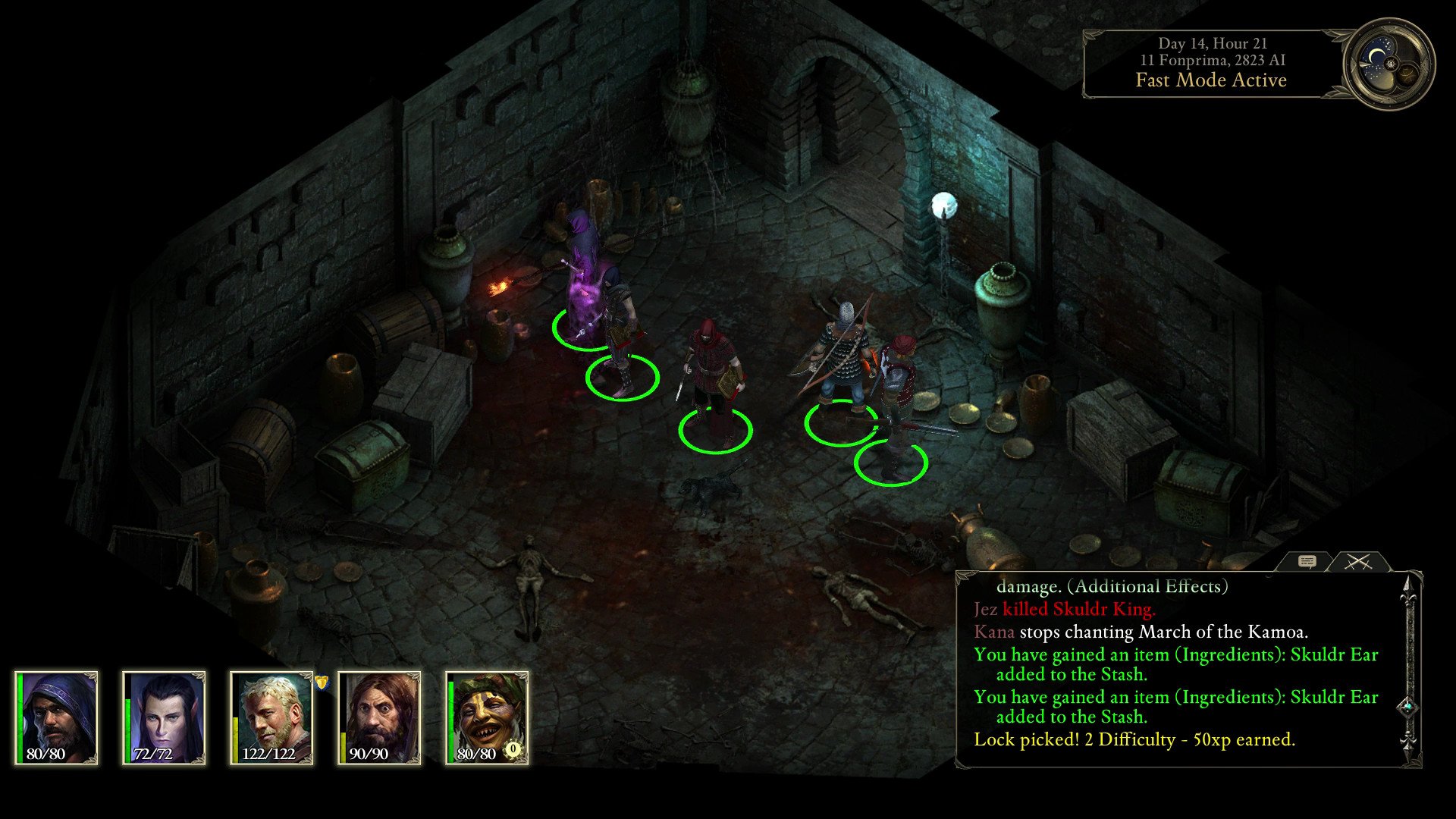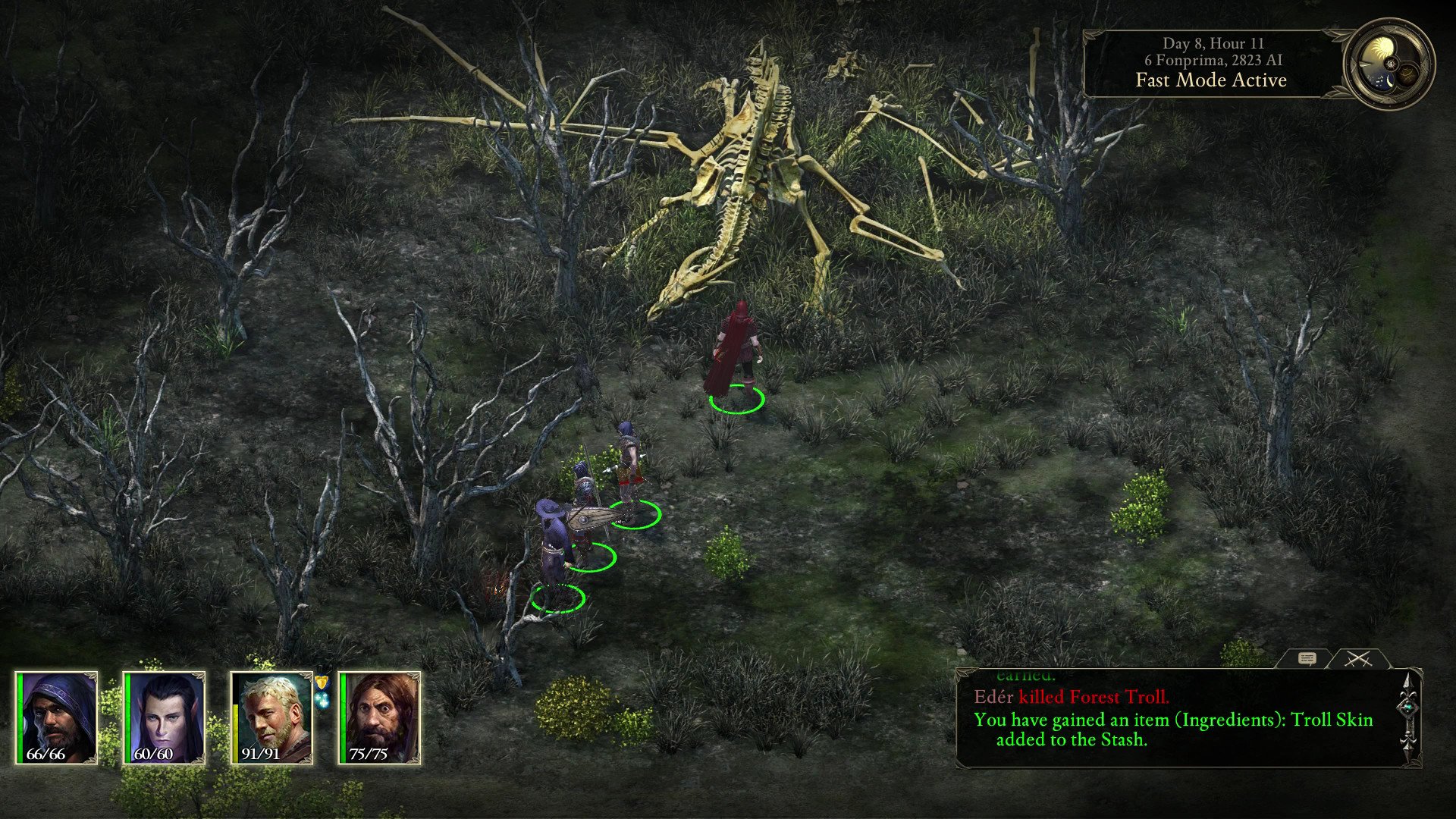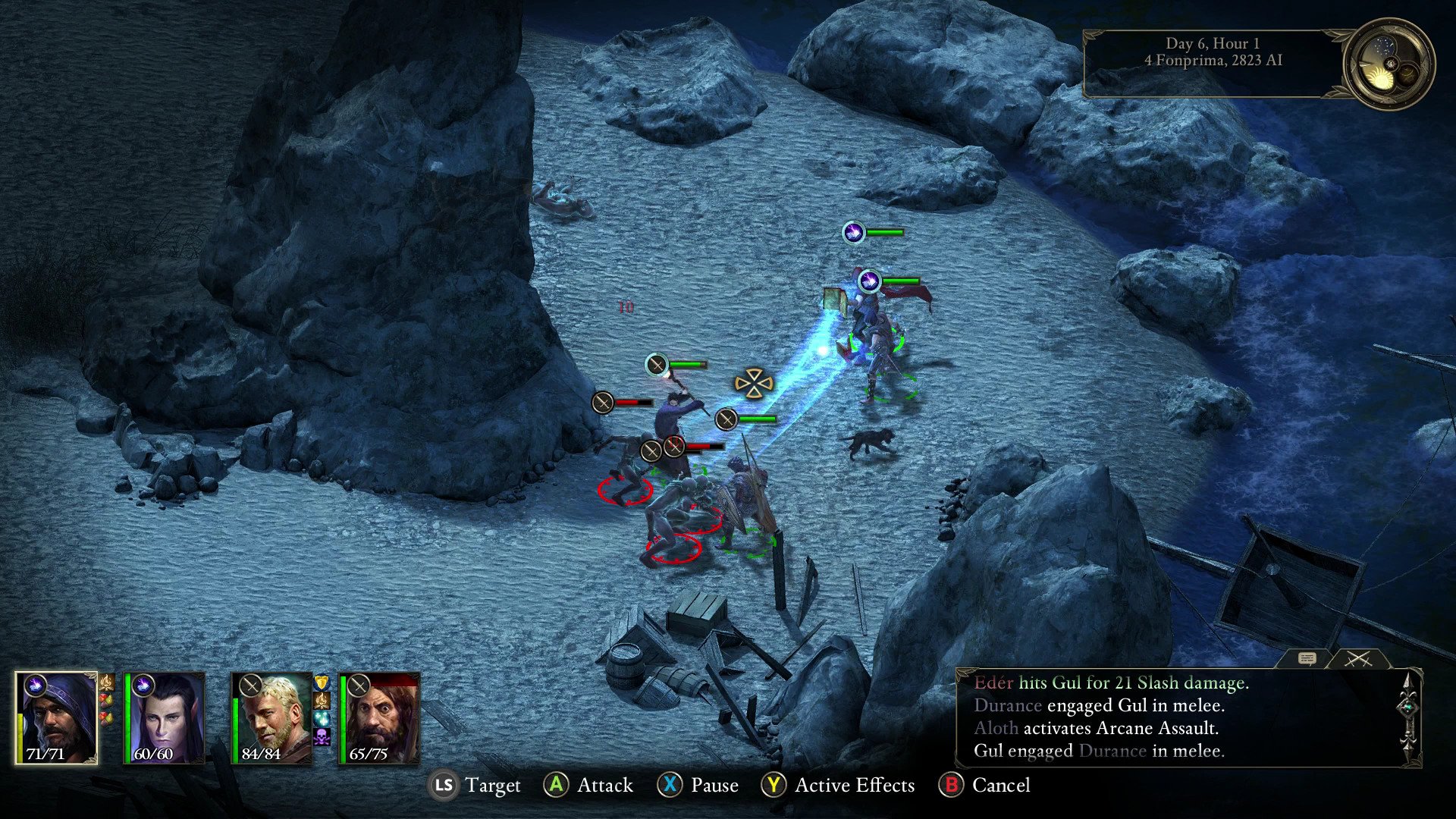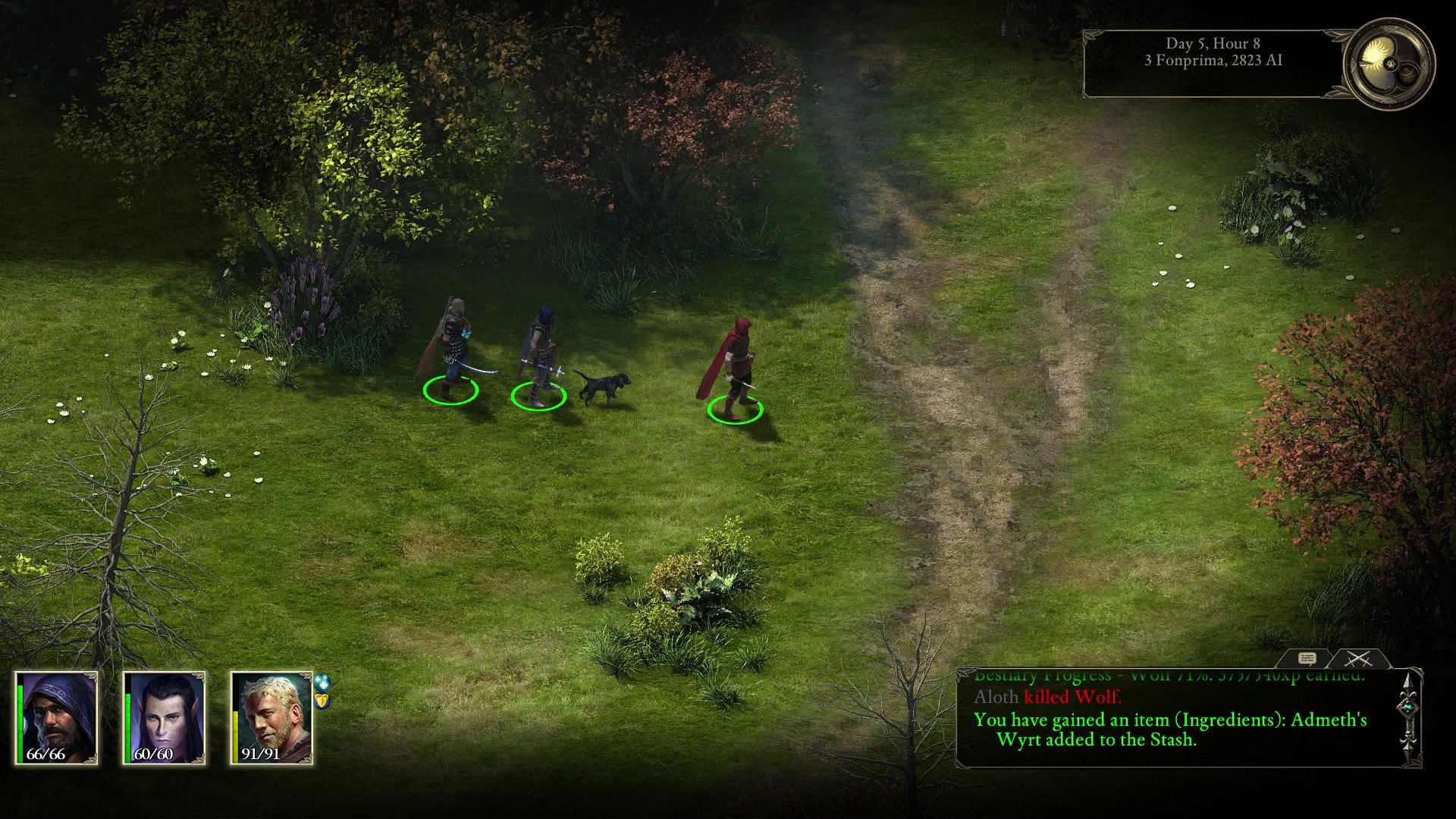Why Xbox RPG fans need to pay attention to Pillars of Eternity
Pillars of Eternity is an upcoming role playing game (RPG) for Xbox One, having launched on PC back in 2015.


Pillars of Eternity was crafted by Obsidian Entertainment, perhaps best known for the Fallout: New Vegas and South Park: The Stick of Truth.
You might say Obsidian Entertainment is an expert when it comes to RPGs, but the company hasn't always had the most luck with publishers. The studio took to Kickstarter to fund Pillars of Eternity and retain independent control over the project, and it has been nothing short of a huge success. Now, thanks to Paradox Interactive, Pillars of Eternity is making the leap from PC to console.
I've been plunging the depths of Pillars of Eternity's dark dungeons and treacherous plains for a few weeks. You might wonder how a classic, isometric computer RPG with complex inventory systems and stat allocations might work on Xbox One, where a mouse is absent. Well, it works pretty damn well, and even at this early stage in the game, I'm confident in saying Xbox One RPG fans cannot ignore Pillars of Eternity, which is expected to launch for about $50 on August 29, 2017, for Xbox One.
What do you do in Pillars of Eternity?
Pillars of Eternity is a computer RPG, or cRPG, that shares a history with Fallout's original games and Baldur's Gate. Based on Dungeons and Dragons, Pillars of Eternity allows you to create your own character, its gameplay class, and head into the vast region of Eora.
Early in the game you discover that you're a Watcher, uniquely gifted with the ability to peer into the very essence of people's souls. You can view past lives, previous events, and gain psychic insight into an individual's intentions, but it's not all fun and games.

It appears that gradually, over time, Watchers lose the ability to distinguish between the visions of the souls of others, and reality itself. Not long after discovering their abilities, the player encounters a much older Watcher, haunted and driven mad by the shadowy figures in his mind. Resolving to find out more about their condition, the player Watcher embarks on a quest, meeting all sorts of quirky characters, vicious beasts, and huge, eldritch horrors along the way.
Endless choice and customization
Modern era RPGs, even from huge publishers tend to have forgotten the importance of choice and customization in RPGs. It's easy to understand the financial logic; why create features and narrative branches players might never see or use?
Get the Windows Central Newsletter
All the latest news, reviews, and guides for Windows and Xbox diehards.
You can be a total dick in most quests, or righteous and charitable in others. It's up to you.
BioWare put out some interesting stats about Mass Effect previously, detailing how various pathways were never uncovered by huge amounts of players. To a publisher, that might be interpreted as wasted cash, rather than reinforcing the importance of your gameplay choices.
Either way, Pillars of Eternity frankly doesn't concern itself with how many of its options are seen, instead, it simply ensures that they're there, and there are lots. This ethos extends to almost every corner of the game, including how you approach quests, how you design your character's playstyle, their looks, and general behavior. You can be a total dick in most quests, or righteous and charitable in others. It's up to you.
You're able to express your reasons for undertaking the game's main quest, tailoring your character's personality. And of course, it's up to you how you develop your character's skills. But beware the consequences.

Pillars of Eternity follows that classic RPG tradition Obsidian is essentially born from. The studio rose from the ashes of Black Isle Studios and Interplay, with staff involved in games like Baldur's Gate and the original Fallout games. That tried and tested Dungeons and Dragons-inspired gameplay is steadily making a comeback on PC, and now it has begun spilling over onto console, with games like Wasteland 2, Divinity Original Sin, and more recently, Torment: Tides of Numenera.
One thing these titles have in common is that your actions should bare consequences. In Pillars of Eternity, I came upon a young boy who offered to tell me the location of some treasure in exchange for some help. Rather than be pushed around by some punk kid, my frost-wielding wizard leveraged his Might stat to threaten the boy and then throw him onto the cold cobbled streets. Sure enough, the kid divulged the information, but several of my party members expressed their anger for how my wizard had treated the poor boy, who was now wailing loudly.

Your companions are by no means essential for completing the story; treat them badly, and they can permanently leave the party, even permanently die, should you ignore their injuries and ailments for long enough. The action and reaction gameplay makes Pillars of Eternity immersive far, far beyond its isometric visuals are capable of, bringing that true Dungeons and Dragons feel to your TV.
Bringing cRPGs to console
I've been playing Pillars of Eternity: Complete Edition for a few weeks now, and while I'm certainly not passing any sort of final judgement (there are still a couple of weeks to go before launch, and patches might be on the way), the game already handles really well on Xbox One, despite the complexity of its gameplay and systems.
Obsidian uses radial menus in place of hot bars you might find on PC, allowing you to customize the spells in your Grimoire, select different abilities for use in combat, and access things like conversations and the inventory with relative ease. Obsidian has done a decent job moving the game over to an Xbox controller.
Pillars of Eternity isn't turn-based like Wasteland 2 or Divinity Original Sin. Instead, combat takes place in real time, with casting and attack speeds being affected by your stats. You can, however, pause combat at any time and issue commands to your squad, and watch them play out in real time afterwards. This gives Pillars of Eternity a tactical edge, where the power of your characters can be supplemented by good positioning, use of the environment, and properly setting up pre-emptive attacks.
Honestly, I'm still getting to grips with the game's dizzying array of stats, spells, and status effects. This is not a game for casual players. You will be doing lots of reading, research, and trial and error, as you learn your way through the game's complex systems.

What little I have learned, however, is already making Pillars of Eternity incredibly rewarding. Scout ahead with a stealth class, position your casters in the back, put your armored fighter in the front, and watch as enemies falter under your might (with the occasional explosive gore effect for good measure).
Pillars of Eternity's visual effects might not be up there with the biggest AAA publishers, but they do the job, and they do the job well. Whether you're summoning skeletons, smashing enemies with a big axe, or sneaking around for a cheeky arrow in the back, there are nearly endless ways to approach combat. Particularly if you're creative.
Pillars of promise
Pillars of Eternity: Complete Edition should launch on August 29, 2017 for Xbox One for $49.99, and even though I have only just reached the first major city, I'm completely hooked. The characters are extremely well written, the story is mysterious and intriguing, the gameplay systems have unyielding depths, and Pillars of Eternity is as challenging as it is rewarding ... so far.
I'll put together a full review nearer the game's launch to talk about visuals, engine performance, and other things of that nature, but until then, keep Pillars of Eternity on your radar, especially if you're an RPG fan.

Jez Corden is the Executive Editor at Windows Central, focusing primarily on all things Xbox and gaming. Jez is known for breaking exclusive news and analysis as relates to the Microsoft ecosystem while being powered by tea. Follow on Twitter (X) and Threads, and listen to his XB2 Podcast, all about, you guessed it, Xbox!
